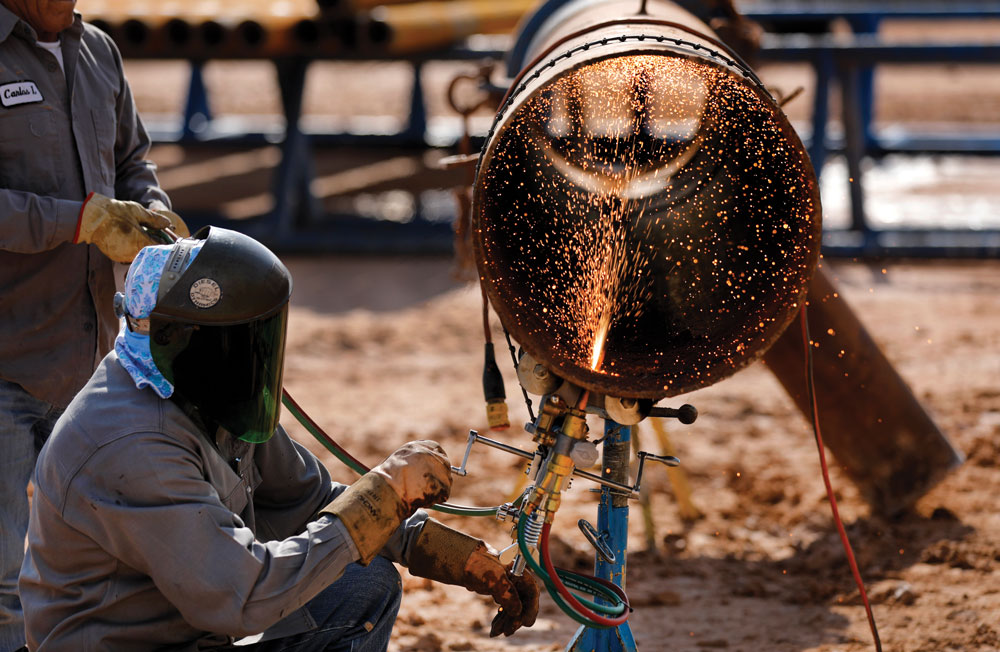The Basin Endures
The second half of the 20th Century saw the billionth barrel from Yates Field, OPEC’s birth, low oil prices, huge mergers and the Spraberry surge.
By Gregory DL Morris, Contributing Editor

The 1940s and 1950s were the golden age of the Permian Basin, marked by many of its biggest, most legendary field discoveries. In 1950, more than 215 oil companies had offices in Midland and the population increased to almost 22,000, according to the Texas State Historical Association.
By 1960, the population was close to three times that. Midland residents also began to enjoy a new two-story library and museum constructed by the county. However, volatility remained the force that underpinned the fate of cities and companies throughout the basin. The local economy slumped between 1960 and 1970 as the domestic oil industry was overwhelmed by oil imports, primarily from the OPEC cartel. Oil traded as low as $3 per barrel.
Some 5,200 wells were drilled in West Texas and Southeast New Mexico in 1960, with development drilling concentrated on the Central Basin Platform. A couple of big, exciting discoveries were brought in that year. Two Pecos County wildcats gave the industry glimpses of the immense potential of the deep Delaware Basin, finding gas in Pennsylvanian, Devonian, Silurian and Ordovician pays at depths down to 16,680 feet, a Texas record.
But at the decade’s end in 1969, the number of wells completed annually had slumped to just above 3,000, although deep exploration for gas had proved quite successful throughout the 1960s, with numerous wells being successfully drilled to depths below 20,000 ft. and production established below 22,000 ft. This was not routine, by any means, but the industry had found huge, highly prolific gas fields such as Gomez and Wink at depths that were unreachable in past decades.
Midland’s population had again slipped below 60,000 by 1970 — but then it grew again when a new boom unfolded. In 1971, the federal government under Richard Nixon instituted a set of complex federal oil price controls. U.S. oil production peak- ed that year, even though operators in the Permian continued drilling more wells through the decade.
But big changes were afoot. In October 1973, the Organization of Arab Petroleum Exporting Countries (OAPEC), a subset of OPEC, instituted an oil embargo against the U.S. in retaliation for President Nixon’s request for Congress to send $2.2 billion in emergency aid to Israel for the Yom Kippur War.
